Following the successful 28th Feb - 2nd Mar 2014 Exhibition at St Luke's Church, the completed artworks will shortly be available to view via an OnLine Exhibition on this website. ~James
0 Comments
Excellent session at Thornhill Art Group today. People bought in their work for the exhibition - some real variety and some fabulous and exciting work.
Over 50 pieces of work will be on show in all media including paint, collage, 3d forms, digital imaging, weaving, embroidery, chalk and charcoal, amongst other things. Not to mention the 'DNA strand carousel' - as a result of a project led by Sandie - intrigued? Best come to the exhibition! About a dozen artists have so far completed the 'sketch book challenge' for which prizes are due. They contain personal reflections on art and life and the RMS Project, and are to be shared at the launch. Work continues at the Tardis Studios where Geoff is hand making 24 1m x 2m frames covered in calico on which to hang the work. An innovative picture hanging system purpose built for our launch weekend. And our exclusive Private view invites are being sent out from today - hope to see you there! ~Jacqui L Private View
with drinks and nibbles (by invitation, or contact the Team): Friday 28th February 2014, 7.00pm St Luke's Church Hedge End Southampton SO30 2US To be opened by The Venerable Dr Peter Rouch, Archdeacon and a representative from the Royal Microscopical Society (RMS) Public View Sat 1st Mar 10.00-12.00, 3.00-5.00pm Sun 2nd Mar 10.00-11.15am (as part of Sunday service) This exhibition will be part of the Annual Hopeweavers Gathering Please contact a member of the Team for more details Details of the exhibition launch event will be posted here shortly after 16th December 2013. ~James
We are currently in the process of organising the launch event for the first exhibition. More details to follow soon.... ~James
After completing some business in Glasgow on Thursday (09/05/13), I thought I'd spend an hour at GOMA before heading back to the airport. Some of the images below have some hair/identity link and therefore maybe of some interest here. I've always liked the extended captions for exhibits, such as the ones shown here; maybe we could adopt a similar approach? ~James It's been a busy time, but I thought I should provide a summary of the Portsmouth visit that happened last week before some important points disappear from mind. The idea was to fit the visit in during the Easter break whilst it was relatively quiet. Unfortunately, Jacqui L and Sandie could not attend due to a timetable clash and a chest infection.
I thought I'd start the visit with a lecture-type chat where I would go through the hair images of the TAG members that I had imaged in March. The slides from the PowerPoint presentations are shown elsewhere in this blog. The coach arrived at Portsmouth slightly earlier than expected and so whilst waiting for Lynda and Jacqui S, we chatted about the project in general. It became obvious that some of the group were finding the idea behind the project a bit difficult to grasp. I said I'd go through this again during the presentation. I spoke about the website and the blog section designed to report the latest news and provide a historical record etc. I also handed around a contact list where TAG members were invited to provide their email addresses to encourage further two-way communication. By this time Lynda and Jacqui S had arrived. I gave out the folders, marked with the TAG members initials, containing the images but said not to open the them just yet - everything was on the screen. I reassured the group that the images and notes about them were included in the pack and so it wasn't necessary to write everything down, although pens and paper were provided. I did say that I would be grateful if they could remove the feedback sheet from the back of the folder, answer the two questions and leave it in the lab before they went (see feedback response elsewhere in this blog). I started the presentation with an overview of the project and that the main idea was for artists to 'interpret' the AFM images, both those given out today and previously, in a way that was personal to them. This could be done in a scientific/direct way, such that the images might be 'seen' in the artworks, or in a deeper, personal way, facilitated by the fact that the latest images were taken directly of them. I stressed that the second method was preferable, although both would fit the public understanding of science remit. Any artwork is 'allowed', as long as the micrograph(s) had provided some kind of inspiration. I mentioned that I imagined that in the exhibitions to come, some caption text might be positioned next to the artwork offering some explanation. This might provide the greatest source of public understanding after the observer had been drawn in. I also mentioned that there were different levels of teaching science to the public: in this case, me to TAG members and then TAG members getting 'in on the act' via their interpretative artworks. I think I got the point across. I then asked the group to open their folders, remove the envelope and discretely open it to reveal their 'code numbers'. These were to allow the PowerPoint commentary of the images to proceed without pride, violence or remorse. I did make a strong point of mentioning, however, that the images presented were not representative of that hair and even less so a whole head of hair; just a few micrometres along the hair, a different story might be told! I talked about the importance of adequate sampling in science and that I didn't ask for the hairs to be cleaned, but said that these images were nonetheless obtained from them and so might provide some source of reflection. I went through the images one by one going through their structural features and significance. Conscious of not wanting to bore people to tears with holiday photos, I cut the presentation in two by only showing one root image and one tip image, although two of each were provided in the pack. There was still quite a bit of similarity between the images and in summary, I concluded the hair samples followed the basic fragmentation patterns seen before with hair samples (see conclusion on the PowerPoint presentation). In doing the scanning, however, some interesting structural features were seen and I mentioned that these were being discussed with fellow scientists - there is still much to learn about hair! We had a Questions & Answers session at this point. Questions included:
After this, we retired to the microscopy suite. I showed the group the various microscopes: light ('normal'), fluorescence, live cell imaging and the all-important(!) AFM (and we briefly discussed the scanning electron microscope, located in the neighbouring building). I always like to discuss the AFM probe in terms of a record player stylus. I then asked the group whether they wanted to scan the silver fox, hippopotamus tail, elephant, alpaca, Asiatic lion - male or female - or the flying fox: I assumed that they might have been a bit fed up with hair by this stage. The hippopotamus tail won. The group were surprised to see the thickness of the 'hair' and we had some difficulty cutting it with scissors, even with the special hippopotamus tail hair-cutting scissors. We landed the tip carefully, trying to avoid crashing it into the hippo - never a good thing. The group seemed very interested and many of them got out cameras. The questions kept coming. Lynda and Jacqui S provided further examples of artistic interpretations: Hockney, Holst and Hebrides Overture. We then just had time to scan a bit of the silver fox, with associated humour, before it was time to leave for the coach. A good time, albeit slightly surreal, was had by all. ~James Aware that we didn't really capture a formal group photo as such yesterday, I asked Roger whether he had one in his records. He obliged. I am now intrigued by the artwork behind them. More pictures to follow in a couple of weeks. ~James and Roger Some of TAG at one of their exhibitions in 2011.
I think it might take me a little while to prepare a detailed blog entry that would do yesterday's visit justice. However, in the mean time, I thought it would be worth me blogging here the formal feedback from the TAG members. In their information packs, there was a form to provide written feedback about their thoughts on the day. Specifically, there were 2 questions (I didn't want to over-burden!):
Q1) What did you learn today? and Q2) How was today important for you/how did it inspire you? Here are the responses: Q1. The different shapes and patterns that hair creates. Q2. It help me to think of different ways shapes can work together. Q1. I understand a lot more about the images we saw before and how the cuticles relate to each other. Q2. Still a bit unsure about how I am going forward! (Mine was the dodgy sample! - do you want more?) Q1. Will take time to assimilate. Good to know more about aim of project and discussion interesting. Q2. Will find out when I sit down to draw etc. Q1. That there is a lot more to be learnt about hair than one imagines! Q2. It was interesting to learn about the structure and what happens to it. Not sure I can apply art to it, but will try. I wonder how age affects what happens to it? (Thanks, James, you made it interesting) Q1. What the project is about!! Q2. Very important, need to go away and do some thinking!! Q1. - Q2. Look at DNA - strands, connect sticks, how DNA twists. I think that getting across the overall aim of the project has been generally quite difficult, i.e., the "not sure what we are supposed to do" questions kept popping up. I set out to deliberately to keep this a bit vague as I didn't necessarily want the artists to reproduce AFM images per se using various paint media etc, but to reflect upon the micrographs and for them to respond in a way that says something about their own identity inspired by the microscale images. I explained this a bit more fully during the session, especially near the end when gathered around the microscope after most of the feedback forms had been completed. I mentioned that I could imagine an artwork that might not look much like an AFM image, but some descriptive text along side the exhibit would reveal an insight/thought process with reference to the microworld. Lynda and Jacqui S provided some helpful examples, which will be blogged about in due course. I was left with the impression that most people were "getting it", albeit they would need to do more thinking. Not a bad thing. ~James A Portsmouth hairdresser sounds very keen in some participatory art-making for the project. They may even have an 'art space' in their salon - perhaps a venue for some of the exhibition? ~Lynda
|

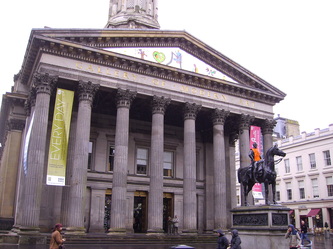
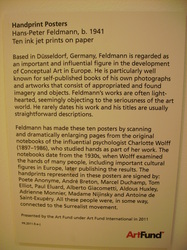
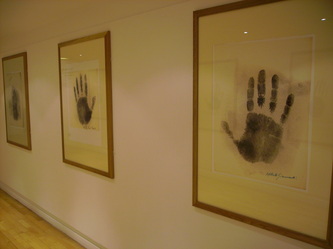
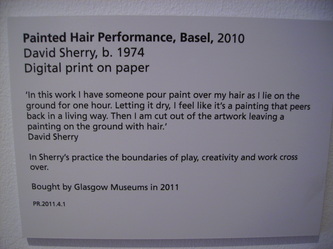
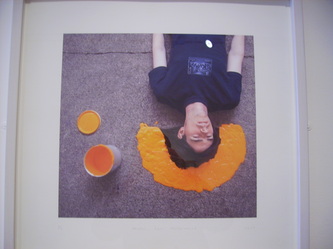
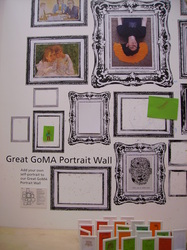
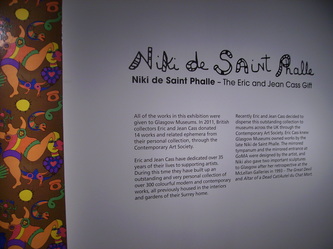
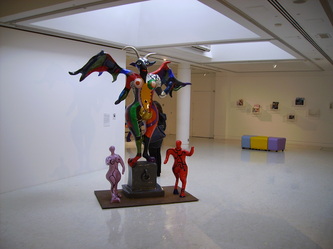
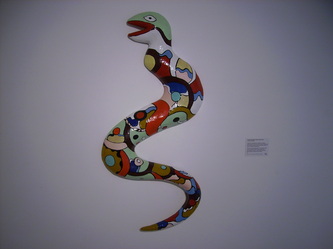
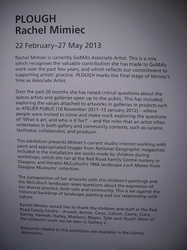
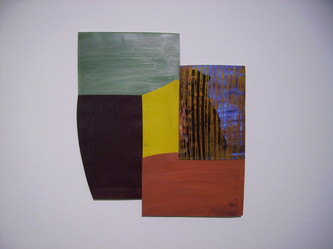
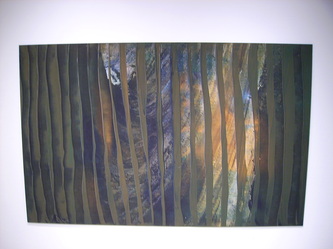
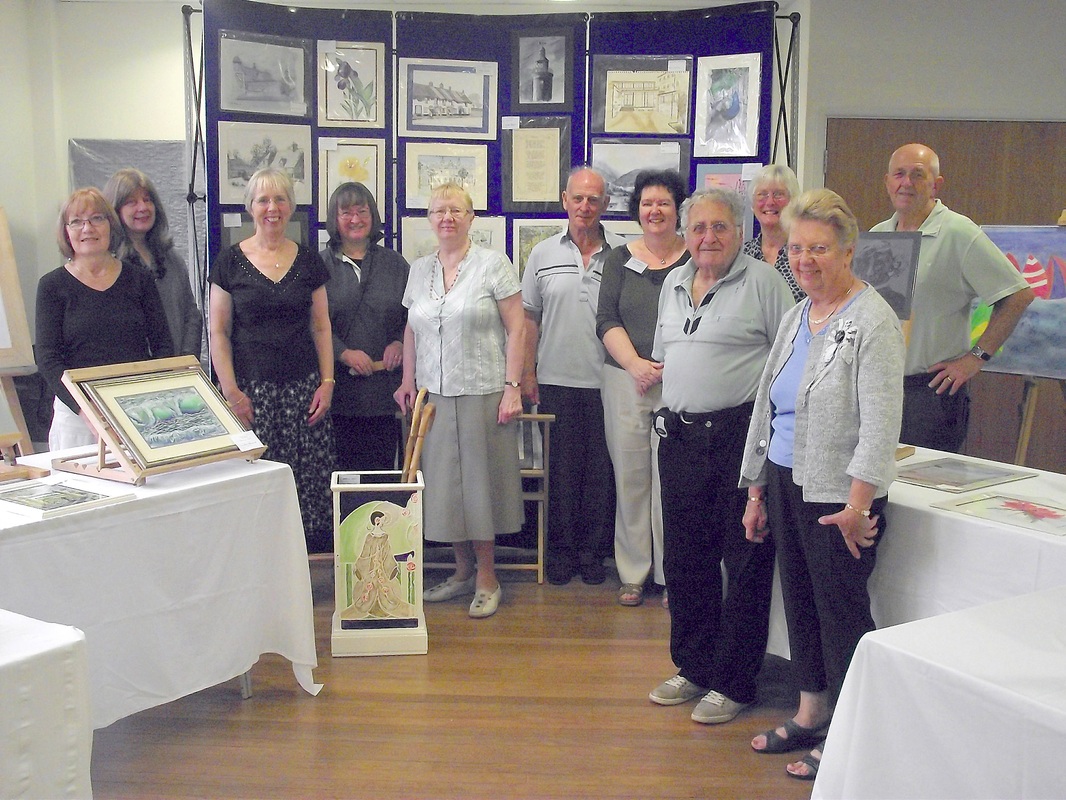
 RSS Feed
RSS Feed